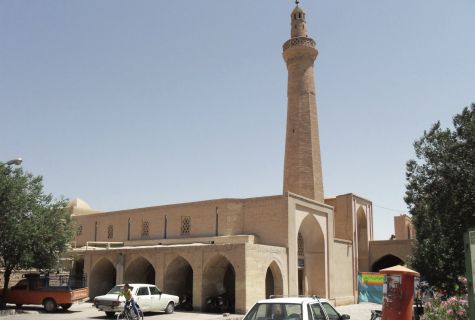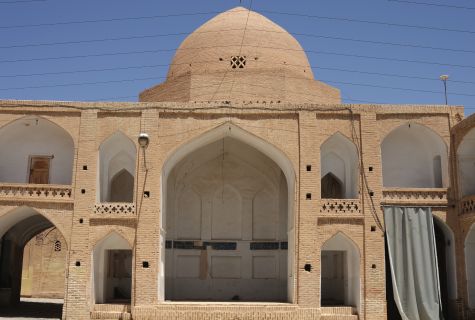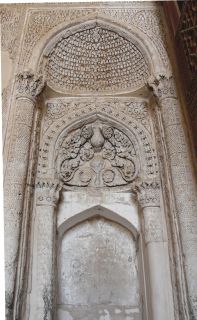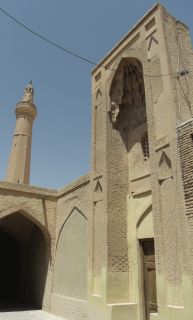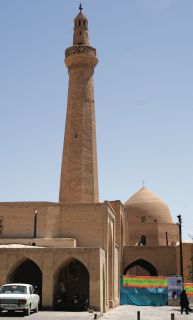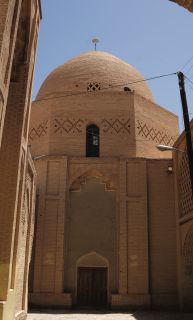Nain Juma Mosque
Iran Nain 12th Century
Seljuk
Built with many supports, the Nain Juma Mosque has survived to the present day from the Seljuk period with some alterations and additions. Arcades, around which there are many irregular spaces, surround the courtyard. Researchers suggest that the courtyard section with the arcades dates from the Seljuk period. However, It is thought that such sections were angled buttresses serving to support the middle nave in the northwestern wing. These supports on the bases of the arcades surrounding the courtyard are from the first building.
These buttresses emphasise the direction of the qibla inside the courtyard. The arch axis in the middle was emphasised by a high and wide construction in this direction. This section is taller than the ones next to it and pointed in the direction of the qibla. These supports occur at the stalactite molding level of the arcades.
The minaret of the building shows differences from other Seljuk minarets in Iran. It was suggested that the minaret constituted an example of the transition of early minarets to the 11 th and 12th century minarets. However, Bloom states that the Nain minaret cannot be an early period minaret. The minaret consists of an octagonal body, rising on a square base. The body tapers towards the base.
There are interesting terracotta and stucco decorations on the courtyard's surface and on the mihrab. The decorations on the arcade arches of the courtyard, particularly, display characteristics of the Seljuk period.
Bloom, J., 'Minaret: Symbol of lslam", Oxford, 1989. s.151. Hillenbrand, R., "lslamic Archecb.ıre: Form, Function and Meaning", (Edirıburgh: Edinburgh Universfy Press, 1994.
Michell, G., "Architecb.ıre of the lslamic World", Landon: Thames and Hudson, 1978. O'Kane, B., "lran and Central Asia (Chapter I of Studies in Persian Art and Archecb.ıre)", Cairo, Egypt The American Universfy in Cairo Press, 1995.
Pepe, A.U., "Architecb.ıral Ornament'', in A Survey of Persian Art, ed. Arthur Upham Pepe ve Phyllis Ackerman, Tehran: Soroush Press, 1977, s.1258-1364.
Schroeder, E., "Standing Monuments of the First Period", in A Survey of Persian Art ed. Arthur U.Pope ve Phyllis Ackerman, Tehran: Soroush Press, 1977, s.931-966.

